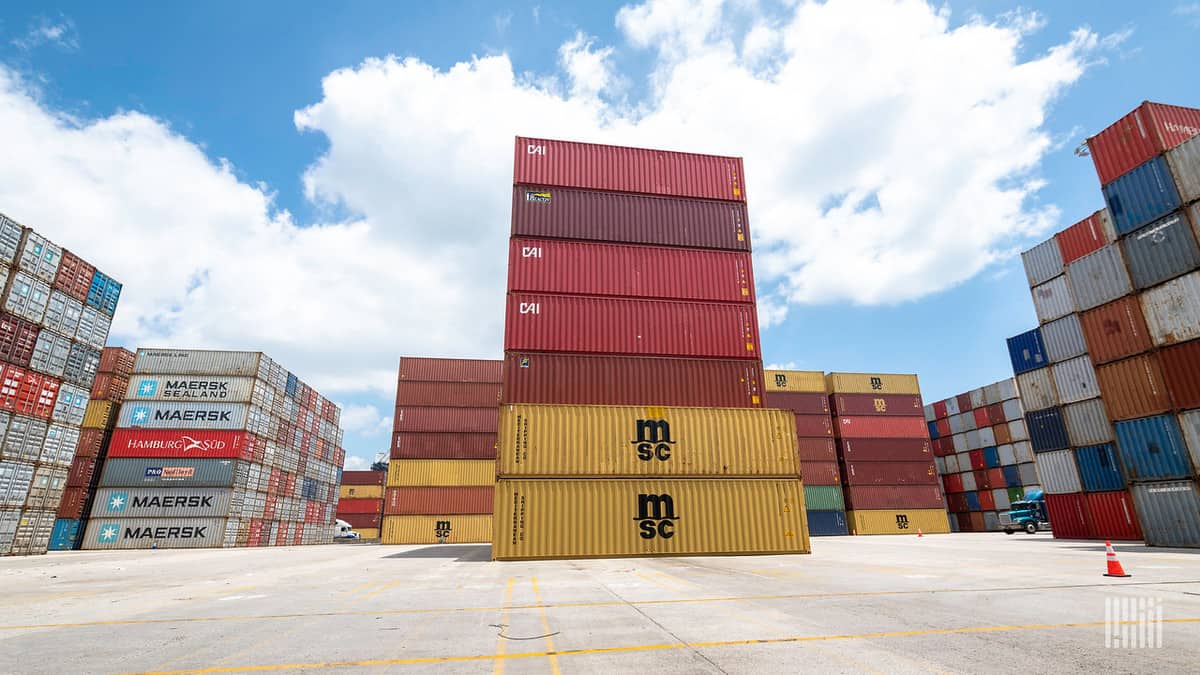U.S. Southeast and Gulf Coast seaports and industrial distribution hubs will be the prime beneficiaries of U.S. firms shifting supply chains from China due to disruptions from the coronavirus pandemic and higher tariffs from the U.S-China trade war, according to a report published Thursday by real estate and logistics services giant CBRE Inc. (NYSE:CBRE)
Markets from Virginia to Texas and ringing much of the Southeast will gain as U.S. supply sources increasingly shift to European origination points and to Asian markets that access the U.S. East Coast through the Suez Canal, CBRE said. Southern European manufacturing centers and ports may become viable alternatives for companies looking to lessen their dependence on China, the firm said.
In a statement, James Breeze, CBRE’s global head of industrial and logistics research, said that while West Coast seaport fundamentals remain sound, the “top markets for growth will likely shift to the Southeast.” Charleston, South Carolina; Savannah, Georgia; and Norfolk/Hampton Roads, Virginia, have three of the fastest-growing ports in the country. Perhaps unsurprisingly, Savannah, Greenville, South Carolina, and Charleston were the country’s three fastest-growing logistics warehousing markets based on CBRE’s measure of net absorption — the amount of leased space minus vacated space — as a percentage of existing inventory, Breeze said.
“As trade patterns change, the region offers significant logistics capacity, available land for industrial and manufacturing development, lower asking rents, and access to the largest population concentration in the country,” he said. The region’s inland distribution centers and airports will also benefit, as will logistics warehouse capacity as demand increases to manage higher import flows, CBRE said.
An added boost is likely to come from the new United States-Mexico-Canada Agreement (USMCA), which took effect July 1 and requires a higher percentage of North American-sourced materials to be used in the all-important production of automobiles. Matt Walaszek, CBRE’s associate director of industrial and logistics research, said in an interview Thursday that there are “strong indications” that manufacturers and retailers are looking to reshore at least part of their production and distribution to the U.S. because of the USMCA’s provisions.
Walaszek cautioned, however, that reshoring moves are complex to execute. That’s because many firms have put down deep roots in China and have become dependent on the nation’s sophisticated manufacturing and transportation network, which would be impossible to replicate in Asia over the near term. Once initiated, a reshoring strategy can take as long as three to five years to complete, he said.
CBRE’s comments were echoed by James Tompkins, the founder and chairman of supply chain consultancy Tompkins International and one of the world’s most esteemed supply chain management leaders. COVID-19 and the USMCA will “drive more reshoring and near-shoring in the U.S. and less sourcing from China,” Tompkins said in an email Thursday. “This, coupled with the surge in e-commerce sales driven by COVID-19, will result in a significant increase in distribution and fulfillment centers as well as manufacturing in the U.S.”
In the wake of the disruptions caused by the pandemic, the days of seamless intercontinental supply chains are likely over. A post-COVID-19 supply chain will likely face volatility, uncertainty, complexity and ambiguity, which Tompkins has compressed into the acronym VUCA. Businesses will respond by shortening their supply lines and diversifying countries of origin for their goods, he said.
The migration of supply chains from China is part of what has become known as the China+1 strategy. Under this approach, China remains the dominant, but no longer exclusive, location for U.S. firms’ manufacturing and distribution operations.
Walaszek of CBRE said the shifts were already in the works before President Donald Trump took office, and will only be accelerated by the trade war and the pandemic. He expects the trend to persist even if Trump loses his reelection bid and a vaccine or other treatment is discovered for COVID-19, the disease caused by the novel coronavirus.











